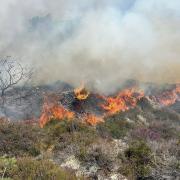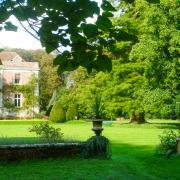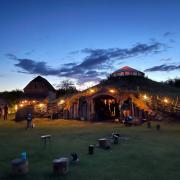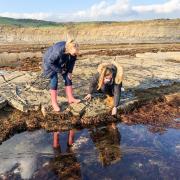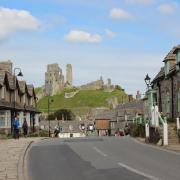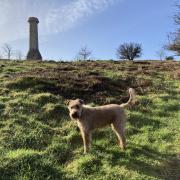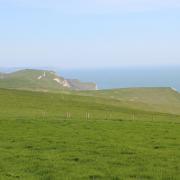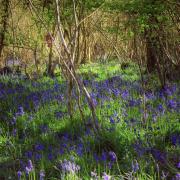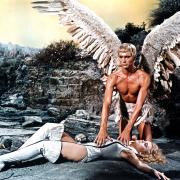JUNE: As nights become shorter and the northern hemisphere tilts ever more towards the Sun, seize the opportunity to seek out stars as darkness finally descends. In June the ancient cross-shaped figure of the sky-bird Cygnus ( a swan to European observers, a vulture for the Romans) announces summer as it rises above the eastern horizon. Find the three blue-white starry beacons of the Summer Triangle: Vega (25 light years) in Lyra the Harp, Deneb (nearly 1500 light years) in Cygnus the Swan and Altair (16 light years) in Aquila the Eagle. Our region in the Orion Arm of the Milky Way Galaxy boasts Spica (261 light years), representing the stalk of wheat (a palm frond to the Babylonians) borne by the spring maiden Virgo; orange Arcturus (36 light years), the brightest star in the northern hemisphere of the sky, and yellowish Capella (43 light years), down to the west.
Look south for Antares (550 light years), the bright red gem once known as the Heart of the Scorpion, perched beneath the upraised claws of the Scorpius constellation. In Java this constellation was seen as both a swan and a coconut tree, while in other South Pacific regions a fishing hook or shark. Bright Venus and fainter red Mars set in spectacular conjunction at month’s end. Look at dusk on June 22nd close to the thin crescent Moon. Use binoculars to see the earthshine, the unlit portion of the Moon lit by reflected sunlight from Earth. Full Moon is on the 3rd. Meteors are usually sparse in June but for the occasional sporadic ones, which could flash across any part of the sky.
Local astronomy events
June 6: Bugs, the First Astronomers talk by David Smith of Buglife, 7.30pm Zoom or Allendale Centre, Wimborne. wessex-astro.org.uk
June 9: Asterisms: Jewels of the Night Sky talk by Bob Mixon, 7.30pm, Zoom or St Aldhelm’s Church Centre, Spa Road. weymouthastronomy.co.uk
Find dates of stargazing events organised by the Wessex Astronomical Society at Durlston Country Park’s Astronomy Centre at wessex-astro.org.uk/durlston




